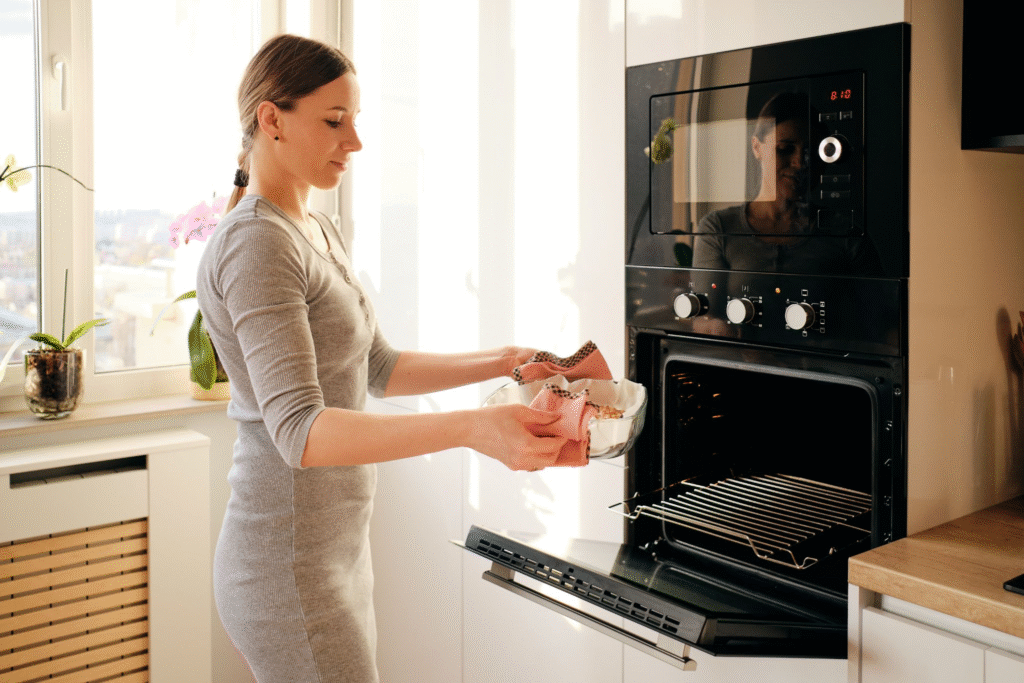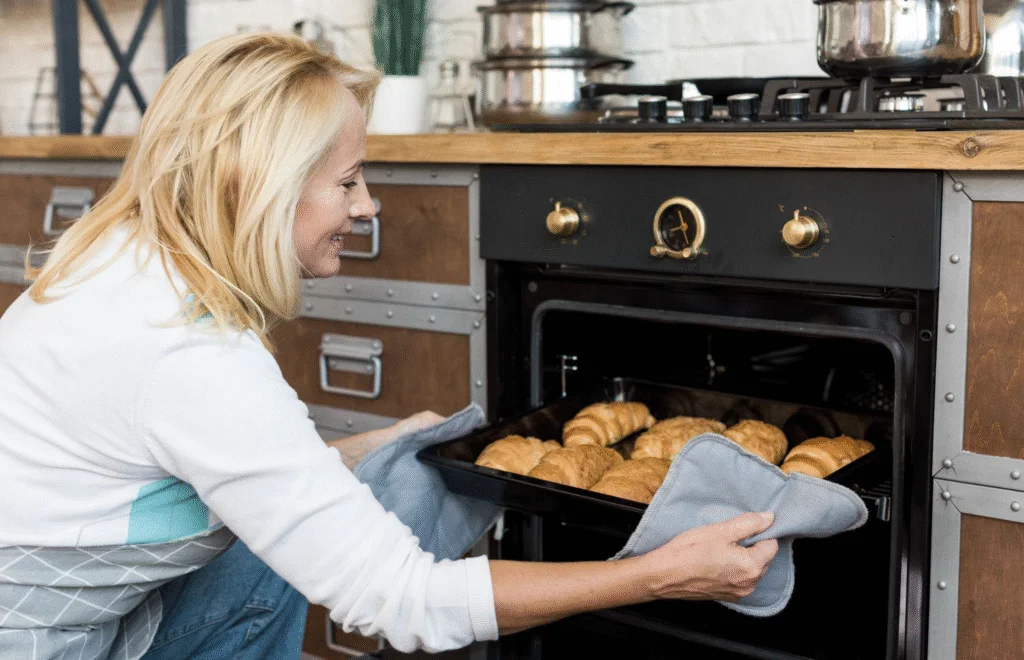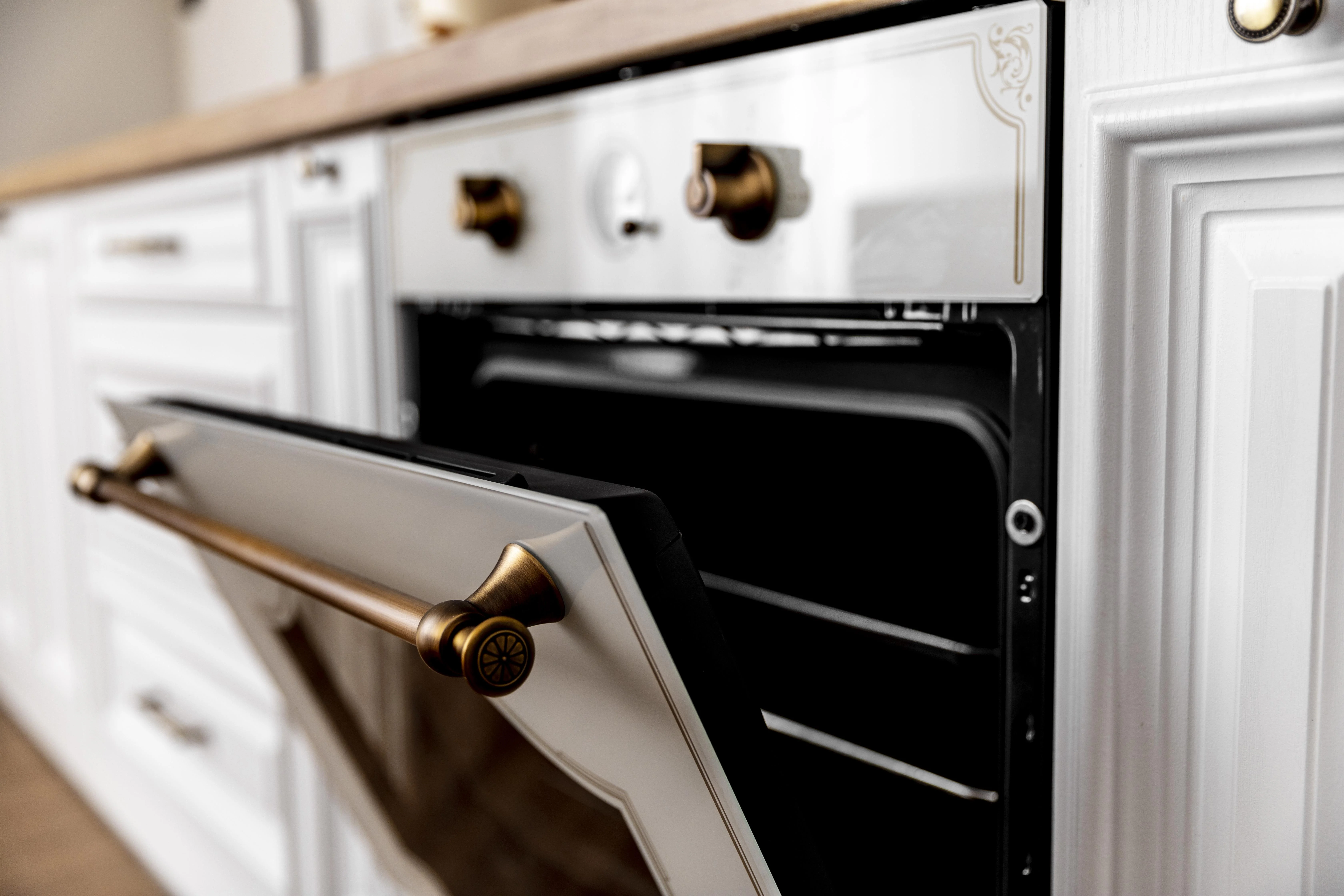Convection Oven vs Conventional Oven: Which One is Right for You?
Choosing the right oven for your kitchen can greatly impact your cooking experience. With so many different types of ovens on the market, it’s important to understand what’s the difference between a convection and conventional oven. In this article, we’ll compare the two, highlighting their advantages and helping you decide which one suits your cooking style.
Key Takeaways
- Convection ovens cook faster and more evenly due to the fan and heating elements.
- Conventional ovens offer more consistent heat for slower, delicate cooking.
- Convection ovens are more energy-efficient, using lower temperatures and shorter cooking times.
- Choose a convection oven if you want quick, even cooking for large batches, or a conventional oven for slow-cooked meals and classic baking recipes.
What is a Convection Oven?
A convection oven is equipped with a fan and heating elements. The fan circulates hot air around the food, allowing it to cook more quickly and evenly. So, what is a convection oven? It’s an oven designed to ensure consistent heat distribution by circulating the hot air, resulting in faster cooking times and more even baking and roasting results.
Benefits of Convection Ovens:
- The fan helps heat the oven more quickly, reducing cooking time by 25% or more.
- The circulating air eliminates hot spots, ensuring even cooking.
- Because they cook faster, convection ovens use less energy than conventional ones.
- Ideal for cooking large meals or multiple dishes at once.
What is a Conventional Oven?
A conventional oven operates with heating elements, usually located at the top and bottom of the oven. These elements heat the air in the oven, cooking food through direct heat. When you ask what is the conventional oven, it refers to a traditional oven that uses these heating elements to cook the food, making it simple to use but often slower compared to convection ovens.
Benefits of Conventional Ovens:
- Fewer components to maintain or repair.
- Great for slow cooking, roasting, and baking tasks that require even, gentle heat.
- Generally more affordable than convection ovens.
- Since conventional ovens don’t have a fan, there are fewer parts to worry about.

Key Differences Between Convection and Conventional Ovens
When comparing convection and conventional ovens, it’s important to understand how they differ in key areas such as cooking speed, heat distribution, energy efficiency, and their best uses. These differences can influence the choice of oven depending on your cooking needs and preferences.
Cooking Speed
When it comes to cooking speed, convection ovens vs conventional ovens shows a clear difference. The fan inside a convection oven circulates hot air around the food, which helps reduce cooking time. This results in food cooking up to 25% faster than in a conventional oven. For busy individuals or families, this means less time spent waiting for meals to be ready, especially during peak meal times. On the other hand, conventional ovens tend to take longer due to the lack of air circulation.
Heat Distribution
Heat distribution plays a crucial role in achieving evenly cooked meals. In a convection oven, the fan ensures that the heat is evenly spread across the food, eliminating the chances of hot spots. This makes convection ovens ideal for tasks like baking cookies or roasting vegetables, where even heat is essential. Conversely, conventional ovens rely on static heat, which can cause uneven cooking, especially if food is placed on a single rack or positioned incorrectly.
Energy Efficiency
Energy efficiency is another significant factor when choosing between convection ovens vs conventional ovens. Convection ovens typically use less energy because they cook food at lower temperatures and in less time. This reduction in cooking time leads to overall energy savings. Conventional ovens, however, take longer to cook food and often require higher temperatures, which consumes more energy in the long run.
Best Use
Choosing the right oven often depends on the types of cooking you do most often. Convection ovens are perfect for tasks like baking, roasting, and preparing multiple dishes at once. The even heat distribution and speed make them ideal for quick meals or large family gatherings. Conventional ovens, on the other hand, excel at slow-cooked dishes like braised meats or delicate baking tasks, such as bread. These ovens provide a gentler, more consistent heat, which is crucial for recipes that require more time to cook.
Convection Oven vs Conventional Oven: Which One Should You Choose?
Understanding what’s the difference between a convection and conventional oven can help you make a more informed decision based on your cooking style and preferences. Here’s a breakdown of key factors to consider when choosing the right oven for your kitchen.
Factors to Consider:
- Budget: If you’re looking for a more affordable option, a conventional oven may be the right choice.
- Cooking Style: If you often bake or roast in large quantities, the convection oven is likely to suit your needs better.
- Space: Convection ovens can be slightly larger, so ensure you have enough room in your kitchen.
- Energy Usage: For those concerned about energy bills, the convection oven’s efficiency is a key benefit.

Troubleshooting Common Issues with Convection & Conventional Ovens
Both oven types come with their own set of challenges. Here’s how to troubleshoot common issues:
- Convection Oven Issues:
Uneven Cooking: Ensure the fan is working correctly. Try adjusting the placement of trays and ensure the oven is preheated.
Fan Noise: This is normal. However, if the noise is excessively loud, check the fan for obstructions. If the issue persists, you may need oven repair in Tampa to inspect the fan.
- Conventional Oven Issues:
Hot Spots: Rotate trays halfway through cooking or use an oven thermometer to ensure consistent temperature.
Temperature Inaccuracies: If your oven’s temperature is off, try recalibrating it or use an oven thermometer to monitor the temperature accurately. If you’re still having issues, you can schedule an appointment online for professional oven repair assistance.
Final Thoughts
Choosing between a convection oven vs conventional oven boils down to your cooking habits, space, and budget. Convection ovens are perfect for fast, efficient cooking with even heat distribution, while conventional ovens are a solid choice for slow cooking and delicate baking. No matter your choice, both oven types have their place in the kitchen, offering unique benefits to enhance your culinary experience.
FAQ
What size convection oven is ideal for a small kitchen?
For smaller kitchens, you can opt for a compact convection oven. These models are often countertop units that provide the benefits of convection cooking without taking up too much space. Just ensure you choose one that fits your cooking needs, such as baking or roasting small meals.
What are the common signs that my convection oven needs repair?
Common signs that your convection oven may need repair include uneven cooking, the fan not working, or the oven failing to reach the set temperature. If you notice any of these issues, it’s a good idea to get your oven checked.
Do you offer oven repair services for both convection and conventional ovens?
Yes, at Smart Appliance Services, we provide repair services for both convection and conventional ovens. Whether it’s a malfunctioning fan, temperature inaccuracies, or any other issue, our team is equipped to handle repairs for a variety of oven models.
